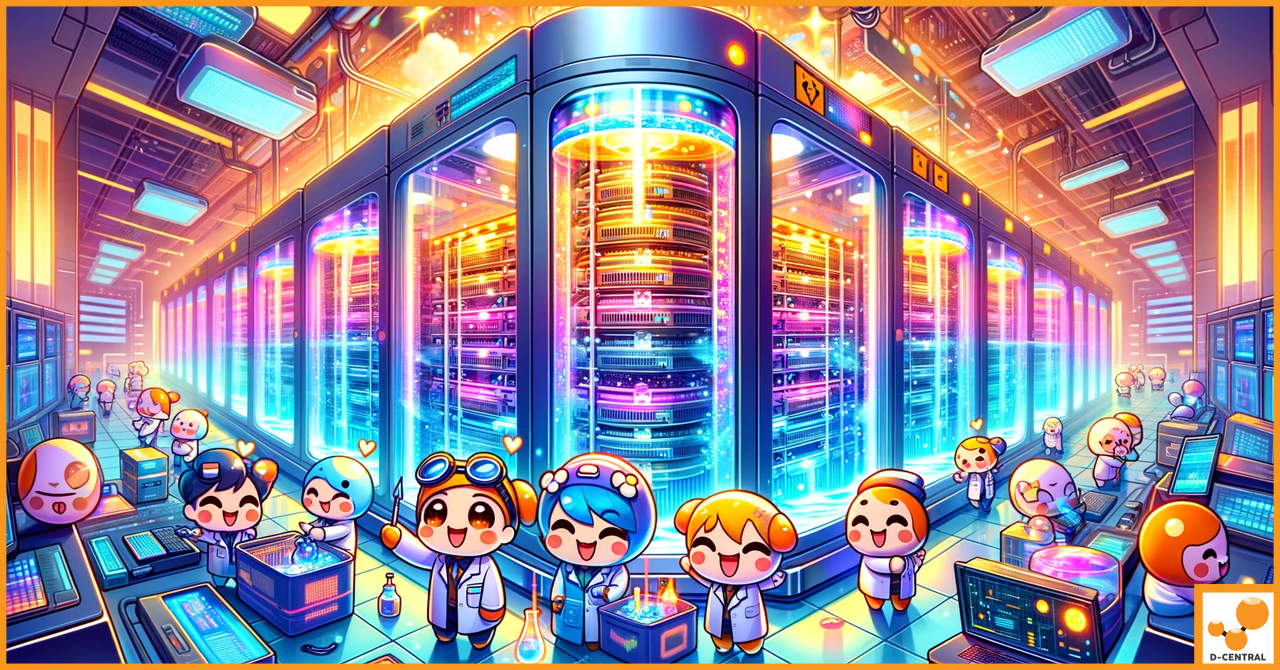
Home Bitcoin Mining in High-Density Urban Areas: Overcoming Challenges
Discover how to successfully mine Bitcoin from your urban home, tackle common hurdles, and optimize your setup for maximum efficiency
4479 Desserte Nord Autoroute 440, Laval, QC H7P 6E2

In the rapidly evolving digital age, High-Performance Computing (HPC) has emerged as a cornerstone of technological advancement, powering complex computations across a myriad of industries. From scientific research and financial modeling to artificial intelligence and Bitcoin mining, HPC systems are indispensable for processing vast amounts of data at unprecedented speeds. However, the immense computational power of HPC systems comes with a significant challenge: heat management. As these systems push the boundaries of processing capabilities, they generate substantial heat, necessitating advanced cooling solutions to maintain optimal performance and prevent overheating.
Enter immersion cooling, a cutting-edge technology that offers a promising solution to the heat management dilemma faced by HPC operations. Unlike traditional air cooling methods, immersion cooling involves submerging electronic components or entire systems in a non-conductive liquid, leveraging the fluid’s superior heat absorption properties to efficiently dissipate heat. This innovative approach not only enhances cooling efficiency but also contributes to energy savings and reduced environmental impact, making it an attractive option for data centers and Bitcoin mining operations alike.
This article aims to delve into the intricacies of immersion cooling, exploring its benefits and limitations within the context of high-performance computing. By examining how immersion cooling stands up to the rigorous demands of HPC systems and its potential to revolutionize cooling practices in industries heavily reliant on computational power, we seek to provide a comprehensive understanding of this technology’s role in shaping the future of computing.
Immersion cooling represents a paradigm shift in how we approach the thermal management of electronic systems, particularly in the realm of high-performance computing (HPC). At its core, immersion cooling is a technique where electronic components or entire systems are submerged in a thermally conductive, but electrically insulating liquid. This method stands in stark contrast to traditional air cooling, which relies on airflow over heat sinks and components to dissipate heat. While air cooling has been the standard for decades, its efficiency diminishes as the thermal load of HPC systems increases, leading to the exploration of more effective cooling solutions like immersion cooling.
The fundamental principle behind immersion cooling is the superior heat absorption and transfer capabilities of liquids compared to air. Dielectric liquids, which are non-conductive, serve as the cooling medium, ensuring that electronic components can operate safely while fully submerged. These liquids have a higher heat capacity and thermal conductivity than air, allowing them to absorb and remove heat more efficiently. The process exploits the natural convection currents within the liquid or forced circulation to transport heat away from hot components to a heat exchanger, where it is then expelled from the system.
Immersion cooling can be broadly categorized into two types: single-phase and two-phase systems, each with its unique mechanisms and applications.
Both single-phase and two-phase immersion cooling systems offer distinct advantages over traditional air cooling, including improved thermal management, reduced energy consumption, and the potential for increased component density. As HPC and other industries continue to push the limits of computational power, immersion cooling stands out as a key technology in addressing the thermal challenges that accompany such advancements.
Immersion cooling offers a suite of advantages that address the critical challenges faced by high-performance computing (HPC) systems, particularly in the realms of efficiency, cost, density, and environmental impact.
Immersion cooling’s superior heat dissipation capabilities stem from the fundamental properties of the cooling medium used—dielectric liquids. These liquids possess a higher thermal conductivity and specific heat capacity than air, enabling them to absorb and transfer heat more effectively. This efficient heat removal mechanism directly translates to improved thermal management of HPC components, ensuring they operate within optimal temperature ranges. The direct contact between the liquid and components eliminates thermal resistance commonly encountered in air cooling systems, leading to a more uniform and efficient cooling process.
The impact on the longevity and reliability of HPC components is significant. By maintaining lower and more stable operating temperatures, immersion cooling reduces thermal stress and the risk of overheating, which are primary causes of hardware failure and degradation. This enhanced thermal management not only extends the lifespan of components but also ensures consistent performance, crucial for the demanding workloads of HPC systems.
One of the most compelling benefits of immersion cooling is the substantial reduction in energy consumption it offers. Traditional air cooling systems, especially in HPC environments, require significant energy to power fans, air conditioners, and other cooling infrastructure. Immersion cooling systems, by contrast, leverage the natural convection of liquids or minimal pumping energy to circulate the cooling medium, drastically reducing the energy required for cooling.
This energy efficiency directly translates to cost savings for HPC operations. Lower energy consumption means reduced operational costs, a critical factor for data centers and facilities running HPC systems. Additionally, the reduced need for extensive cooling infrastructure can lead to lower capital expenditures, further enhancing the economic viability of immersion cooling for HPC applications.
Immersion cooling enables more compact data center designs by eliminating the need for bulky air cooling infrastructure, such as large air ducts and extensive spacing between racks for airflow. This compactness allows for a higher density of hardware within the same physical space, a crucial advantage in urban data centers where space is at a premium.
The potential for scaling HPC resources within limited spaces is greatly enhanced with immersion cooling. Facilities can accommodate more servers and computing power in the same or even smaller footprint, enabling more efficient use of space and resources. This scalability is particularly beneficial for rapidly growing sectors like cloud computing and big data analytics, where demand for computing power continues to surge.
Immersion cooling significantly contributes to the sustainability of HPC operations. By reducing energy consumption, immersion cooling systems lower the carbon footprint of data centers, aligning with global efforts to combat climate change. The reduced reliance on energy-intensive cooling also diminishes the demand on power grids, contributing to broader energy conservation efforts.
Moreover, immersion cooling supports sustainable computing practices by potentially allowing for the use of renewable energy sources and reducing the environmental impact associated with traditional cooling methods. The shift towards immersion cooling in HPC can play a pivotal role in advancing greener, more sustainable data center operations, setting a new standard for environmental responsibility in the tech industry.
While immersion cooling offers numerous benefits for high-performance computing (HPC), it also presents certain limitations and challenges that organizations must consider before adoption. These include initial setup costs, maintenance and operational considerations, and compatibility and safety issues.
The transition to immersion cooling often entails a significant initial investment. This includes the cost of the dielectric cooling liquid, specialized immersion tanks or enclosures, and potentially new or modified hardware designed to optimize the benefits of liquid immersion. Additionally, the infrastructure of the facility may require alterations to accommodate immersion cooling systems, such as reinforced flooring to support the weight of liquid-filled tanks or specialized plumbing for liquid circulation and cooling.
When compared to traditional air cooling methods, the upfront costs of immersion cooling can be substantially higher. Air cooling systems, being the longstanding standard, typically involve lower initial expenses for equipment like fans and air conditioning units, which are more familiar and widely used in data center environments. However, it’s important to consider the long-term operational savings immersion cooling can provide through reduced energy consumption and lower maintenance costs, which can offset the initial investment over time.
Immersion cooling systems introduce unique maintenance and operational requirements. While the closed nature of these systems can reduce dust and particulate buildup, routine checks and maintenance are still necessary to ensure the integrity of the cooling liquid, the effectiveness of the heat exchange system, and the overall operational efficiency. This may involve monitoring liquid levels, checking for leaks, and periodically replacing or filtering the cooling liquid to maintain its dielectric properties and thermal conductivity.
The management of immersion cooling systems also involves a learning curve for IT and facilities staff. Teams may need specialized training to understand the nuances of liquid cooling dynamics, system components, and emergency procedures, differing significantly from the knowledge base required for traditional air cooling systems. Ensuring staff are well-equipped with the necessary expertise is crucial for the smooth operation of immersion cooling systems.
Not all electronic components or systems are immediately compatible with immersion cooling. Certain materials may degrade or react adversely when submerged in dielectric liquids, necessitating careful selection of components or modifications to existing hardware. Ensuring compatibility is crucial to prevent damage to components and maintain the effectiveness of the cooling system.
Safety measures and precautions are paramount when dealing with immersion cooling systems. Although dielectric liquids are non-conductive, they can still pose risks if not handled properly. This includes potential spills, leaks, or exposure to vapors, which may require specific safety protocols, protective equipment, and personnel training. Additionally, the disposal or recycling of used dielectric fluids must be conducted in an environmentally responsible manner, adhering to relevant regulations and guidelines to mitigate any environmental impact.
In summary, while immersion cooling offers a promising solution for the thermal management challenges of HPC, organizations must carefully consider the associated costs, maintenance requirements, compatibility issues, and safety measures. A thorough evaluation and planning phase can help mitigate these challenges and maximize the benefits of immersion cooling for high-performance computing environments.
Bitcoin mining, a process that involves validating transactions and adding them to the blockchain ledger, is an intensely computational task that requires significant electrical power and, consequently, produces substantial heat. Efficient cooling is not just a matter of maintaining operational stability; it’s a critical factor that directly impacts the profitability and sustainability of mining operations. Immersion cooling emerges as a transformative solution in this high-stakes environment, offering benefits that extend beyond mere temperature management.
The relentless pursuit of Bitcoin mining rewards has led to the deployment of vast arrays of specialized mining hardware, known as ASICs (Application-Specific Integrated Circuits), which operate continuously at high loads. The heat generated by these devices can lead to decreased efficiency, increased failure rates, and shortened hardware lifespans if not adequately managed. Traditional air cooling methods, while initially sufficient, struggle to keep pace with the escalating thermal demands of modern mining operations, making alternative cooling solutions like immersion cooling increasingly attractive.
Immersion cooling offers several compelling advantages for Bitcoin miners:
The adoption of immersion cooling in Bitcoin mining also carries broader economic and environmental implications:
Immersion cooling presents a viable and advantageous cooling solution for Bitcoin mining, addressing the critical challenges of heat management while offering performance and environmental benefits. As the cryptocurrency mining industry continues to evolve, immersion cooling stands out as a technology that can support its growth in a sustainable and efficient manner.
The adoption of immersion cooling in high-performance computing (HPC) and Bitcoin mining has been marked by several notable case studies, showcasing the technology’s effectiveness and the tangible benefits it brings to these demanding computational environments. These real-world applications provide valuable insights into the practical implementation of immersion cooling, highlighting the lessons learned and best practices that have emerged.
These case studies and the derived best practices highlight the transformative potential of immersion cooling in addressing the thermal management challenges of HPC and Bitcoin mining. By learning from these real-world applications, organizations can better navigate the complexities of implementing immersion cooling and fully leverage its benefits for their computational needs.
Immersion cooling stands at the forefront of innovative solutions designed to meet the escalating thermal management demands of high-performance computing (HPC) and Bitcoin mining. By submerging hardware in dielectric liquids, immersion cooling offers a leap in efficiency, surpassing traditional air cooling methods in heat dissipation, energy consumption, and operational noise reduction. The key benefits of this technology—enhanced cooling efficiency, energy and cost savings, increased hardware density, and a reduced environmental footprint—paint a compelling picture of its value in supporting the intensive computational workloads characteristic of HPC and cryptocurrency mining operations.
However, the adoption of immersion cooling is not without its challenges. Initial setup and infrastructure costs, maintenance and operational considerations, and compatibility and safety issues present hurdles that organizations must navigate. Despite these challenges, the strategic implementation of immersion cooling, informed by real-world case studies and best practices, can lead to significant operational improvements and long-term benefits.
Looking ahead, the role of immersion cooling in the future of HPC and Bitcoin mining appears increasingly significant. As computational demands continue to grow, driven by advancements in AI, big data analytics, and the ever-expanding blockchain ecosystem, the need for efficient, scalable, and sustainable cooling solutions becomes more acute. Immersion cooling, with its proven capabilities and adaptability, is poised to play a pivotal role in addressing these needs, supporting the evolution of data centers and mining operations towards greater efficiency and environmental responsibility.
For organizations and individuals navigating the complexities of HPC and Bitcoin mining, exploring immersion cooling solutions offers a pathway to enhanced performance and sustainability. We encourage readers to delve deeper into the potential of immersion cooling for their specific needs, seeking advice from industry experts and consulting with experienced vendors. By engaging with the broader community and accessing the wealth of knowledge and resources available, stakeholders can make informed decisions that leverage the full potential of immersion cooling technology.
For more information, consultation, or to explore immersion cooling solutions tailored to your HPC or Bitcoin mining operations, we invite you to reach out to experts in the field and visit relevant websites dedicated to advancing cooling technologies in the computing industry. Embracing immersion cooling could be your next strategic move towards optimizing computational efficiency and embracing a sustainable future in high-performance computing and cryptocurrency mining.
What is immersion cooling?
Immersion cooling is a thermal management technique where electronic components or entire systems are submerged in a thermally conductive, electrically insulating liquid. This method is used to efficiently dissipate heat and is becoming increasingly popular in high-performance computing (HPC) and Bitcoin mining operations.
How does immersion cooling differ from traditional air cooling?
Unlike traditional air cooling that relies on airflow over components to remove heat, immersion cooling submerges components in a dielectric liquid. This liquid has superior heat absorption properties, allowing for more efficient heat transfer and dissipation without the need for extensive air cooling infrastructure.
What are the types of immersion cooling?
Immersion cooling can be categorized into single-phase and two-phase systems. Single-phase systems keep the cooling liquid in a liquid state, circulating it to transfer heat away from components. Two-phase systems involve the liquid changing to vapor upon heating, which then condenses back into a liquid, efficiently transferring heat through the phase change process.
What are the benefits of immersion cooling for HPC and Bitcoin mining?
The benefits of immersion cooling include enhanced cooling efficiency, energy and cost savings, increased hardware density, and a reduced environmental footprint. It allows for more efficient thermal management, enabling components to operate at optimal temperatures and potentially extending their lifespan.
What challenges do organizations face when adopting immersion cooling?
Adopting immersion cooling entails initial setup and infrastructure costs, maintenance and operational considerations, and compatibility and safety issues. Organizations must navigate these challenges to efficiently implement immersion cooling systems and maximize their benefits.
How does immersion cooling impact the environmental footprint of HPC and Bitcoin mining operations?
Immersion cooling reduces the energy consumption associated with traditional air cooling methods, thereby lowering the carbon footprint of HPC and Bitcoin mining operations. Its efficiency and reduced energy requirements align with global efforts to combat climate change by minimizing the environmental impact of computing operations.
Can immersion cooling support the scalability of HPC resources?
Yes, immersion cooling enables more compact data center designs by eliminating the need for large air cooling infrastructure. This allows for a higher density of hardware within the same physical space, supporting the scalability of HPC resources in limited spaces.
DISCLAIMER: D-Central Technologies and its associated content, including this blog, do not serve as financial advisors or official investment advisors. The insights and opinions shared here or by any guests featured in our content are provided purely for informational and educational purposes. Such communications should not be interpreted as financial, investment, legal, tax, or any form of specific advice. We are committed to advancing the knowledge and understanding of Bitcoin and its potential impact on society. However, we urge our community to proceed with caution and informed judgment in all related endeavors.
Related Posts

Discover how to successfully mine Bitcoin from your urban home, tackle common hurdles, and optimize your setup for maximum efficiency

Canada, known for its pristine landscapes and commitment to environmental stewardship, faces a silent but significant environmental challenge: methane emissions.

In the ever-evolving world of finance, digital currencies have emerged as a groundbreaking development, reshaping how we think about money